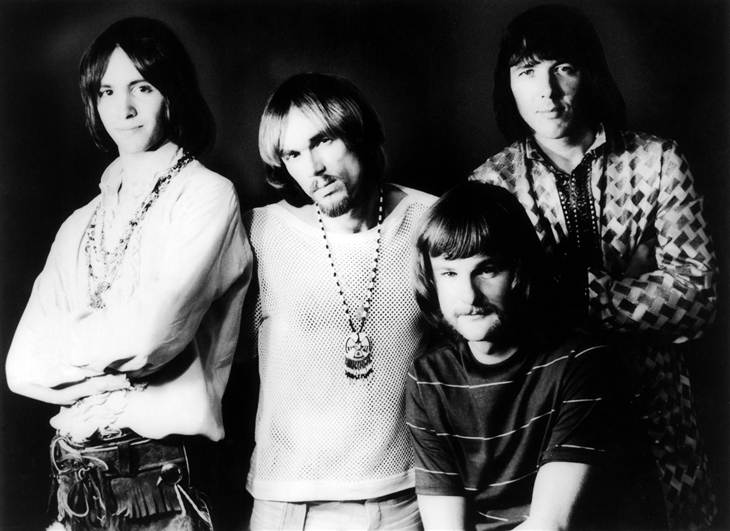In the landscape of 1960s rock music, one name stands out with particular strength: Iron Butterfly. This emblematic group, often associated with the rise of psychedelic rock, left a mark on history with their mesmerizing riffs and unique style. But what's the secret behind this enigmatic band's name and their enduring fame?
“Iron Butterfly” evokes a fascinating duality: the sturdiness of iron combined with the delicacy of a butterfly. This striking contrast mirrors the band's music, a blend of heavy sounds and ethereal melodies. It's this union of opposites that gave birth to legendary tracks like “In-A-Gadda-Da-Vida.”
Formed in 1966 in San Diego, Iron Butterfly initially experienced modest beginnings. With Doug Ingle on keyboards and vocals, Ron Bushy on drums, Lee Dorman on bass, and Erik Brann on guitar, the band crafted a distinctive sound. The release of their album “In-A-Gadda-Da-Vida” in 1968 catapulted them to international fame.
Iron Butterfly was more than a band; it was a living entity with fascinating stories. Doug Ingle once said, “Music is more than notes; it's emotions in color.” This statement encapsulates the essence of their music: a deep, immersive sensory experience.
The band faced tough times, including lineup changes and personal challenges. However, their legacy remains unscathed. Iron Butterfly not only paved the way for many psychedelic rock bands but also left an indelible imprint on modern music.
Diving into the history of Iron Butterfly reveals a rich universe where music and poetry meet to create something unique. A band that, despite trials, soared high, like an iron butterfly in the sky of rock ‘n' roll.
The album : In a Gadda Da Vida
Released in 1968, In-A-Gadda-Da-Vida is a cornerstone of psychedelic rock, an auditory journey that continues to fascinate decades after its release.
The recording of In-A-Gadda-Da-Vida unfolded in near-mythical conditions. A famous anecdote suggests that the album and its title track's name resulted from Doug Ingle, the lead singer, mispronouncing “In the Garden of Eden” while under the influence of alcohol. This mispronunciation, captured in a moment of raw authenticity, became emblematic of the album.
The recording sessions highlighted the band's capacity for innovation. The title track, with its 17-minute runtime, challenged the norms of the time, offering an immersive experience seldom seen in the musical productions of that era.
Upon its release, In-A-Gadda-Da-Vida received a mixed reception from critics. While some praised the work's boldness and originality, others were perplexed by its structure and length. Nonetheless, the album quickly found its audience, becoming a major commercial success and a staple of psychedelic gatherings.
Modern music criticism recognizes the album as a precursor and innovative, highlighting its influence on subsequent musical genres. The title track, in particular, is often cited as a masterpiece of psychedelic rock, a tour de force combining instrumental technique and sound exploration.
In-A-Gadda-Da-Vida remains a testament to the psychedelic era, a time when music sought to push the boundaries of the possible. With this album, Iron Butterfly not only marked their time but also paved the way for future generations of artists.
This album serves as a powerful reminder that music, at its best, is a gateway to the unknown, a means to explore uncharted sonic territories. In-A-Gadda-Da-Vida continues to resonate, half a century later, as the echo of an era when anything seemed possible.
The song : In-A-Gadda-Da-Vida
The lyrics of “In-A-Gadda-Da-Vida” are shrouded in mystery, stemming from a mispronunciation of “In the Garden of Eden”. This mistaken interpretation, far from being a hindrance, added a layer of enigma and allure to the song. The lyrics, though repetitive, blend into a rich and complex musical composition, allowing the whole to convey an experience rather than a simple verbal message. The repetition of the title throughout the song acts as a mantra, taking the listener on a psychedelic journey.
Remarkable covers of “In-A-Gadda-Da-Vida” attest to its enduring influence. Artists and bands from various genres have covered this song, each adding their unique touch. Among the most notable, Slayer's version for the soundtrack of the movie Less Than Zero in 1987, which gave the song a heavy metal twist.
Boney M. also covered this track in 1979, giving it an unusual disco flavor. These covers demonstrate the versatility and universal appeal of “In-A-Gadda-Da-Vida”.

